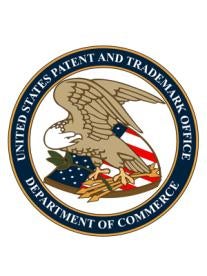The U.S. Patent and Trademark Office (USPTO) published Interim Guidance on Patent Subject Matter Eligibility on Dec. 16 and a request for comments regarding the recent Supreme Court decisions of Alice Corp., Myriad and Mayo. The guidance aims to focus “closer scrutiny” required to examine claims directed to subject matter related to a law of nature, a natural phenomenon, or an abstract idea. This additional scrutiny is designed to ensure the excepted subject matter is not “tied up” so as to preempt innovation by others.
This guidance formally joins the requirements of Mayo and Alice Corp. used by examiners to determine whether patent claims include subject matter that is eligible for patent protection under 35 U.S.C. §101. For those innovations that relate to laws of nature, natural phenomenon and abstract ideas, the guidance provides no bright line test regarding exactly what is required to gain patent eligible status. However, the guidance is clearly only the beginning in the U.S. Patent and Trademark’s Office attempt to harmonize the recent Supreme Court and Federal Circuit decisions and provide meaningful and much sought after direction to both examiners and patent applicants alike.
The guidance provides an illustrative list of concepts that fall within “judicially created exceptions” to the statutorily defined, patentable subject matter categories of process, machine, manufacture or composition of matter. Even if a patent claim falls into one of the statutorily defined categories of patentable subject matter, the claim may not be patent eligible if it is directed only to implementation of an abstract idea on a conventional computer or is only generally linked to a machine/system. Thus, for those inventions relating to “abstract ideas,” the guidance requires some determination of the scope of an inventive concept relative to conventionally-known implementation of that inventive concept.
Under the guidance, a claim may be patent subject matter eligible if the claim includes additional elements that amount to “significantly more than the judicial exception.” Such elements may include subject matter that evidences that the claimed innovation is an improvement in another technology or technical field, an improvement of the functioning of a computer itself, an innovation performed by a particular machine, effects a transformation or reduction of a particular article to a different state or thing, or introduces unconventional steps that confine the claim to a particular useful application. Nevertheless, it remains unclear what is required to support these characterizations.
Citing Alice Corp., the guidance indicates that something more is required “beyond generally linking the use of the judicial exception to a particular technological environment;” however, the guidance fails to indicate when that link transitions to “an improvement to another technology or technical field” warranting patent subject matter eligibility. Applicants may do well to explore the technical effect requirements of the European Patent Office to support arguments that inventive concepts pertain to technological improvements.
The guidance does provide some positive news for patent applicants in that some software innovations may qualify for “streamlined eligibility analysis.” Even if a claim recites a judicial exception, the claim may qualify for such analysis if the claim, “when viewed as a whole, clearly does not seek to tie up any judicial exception such that others cannot practice it.” An example of such an inventive concept qualifying for streamlined analysis is a complex manufactured industrial process or product, e.g., a robotic arm assembly having a control system.
An additional source of optimism is last week’s issuance of the first Federal Circuit opinion since Alice Corp. to hold §101 challenged claims as being patent subject matter eligible. In DDR Holdings, LLC V. Hotels.com L.P., the majority of the three judge panel distinguished the claims at issue from recent Supreme Court precedent because the claimed solution was “necessarily rooted in computer technology to overcome a problem specifically arising in the realm of computer networks.”
Although the law is long from settled in this area, applicants should consider drafting their specifications to describe their innovations in a technical problem-solution format to more effectively support arguments for patent subject matter eligibility.
The Interim Eligibility Guidance supplements the June 25, 2014, “Preliminary Examination Instructions” and supersedes the March 4, 2014, USPTO procedures. It applies to “all applications filed before, on or after Dec. 16, 2014.” Therefore, prosecution portfolios should be examined to determine whether new arguments may be offered to the USPTO for pending cases, and cases being prepared should take this guidance into account. It is important to note that the guidance “does not have the force and effect of law,” Fed. Reg. Vol. 79, No. 241, p 74618, 74619. However, USPTO examiners will be following it.


 i
i


